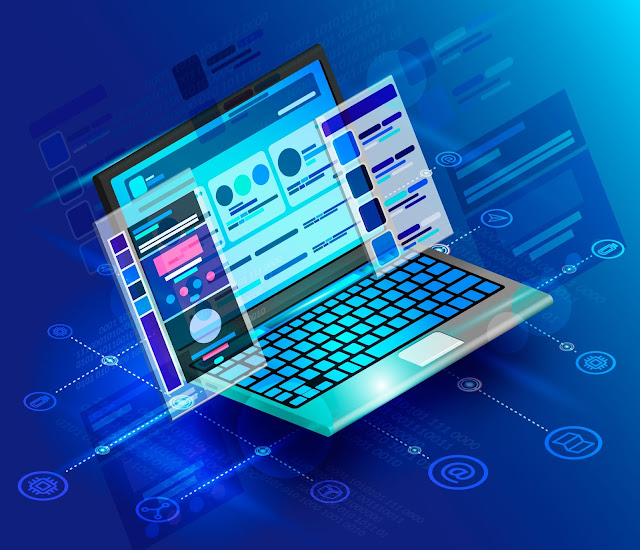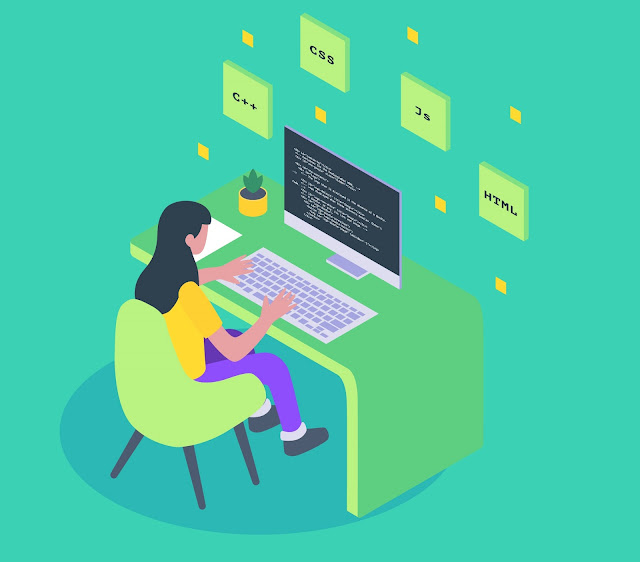Python and the Internet of Things (IoT): The Future of Web Development
Introduction:
The world of web development is constantly evolving, and one of the most exciting trends on the horizon is the Internet of Things (IoT). As more and more devices become connected to the internet, the need for web developers to build applications that can communicate with these devices is growing. Python, with its flexibility, scalability, and ease of use, is quickly becoming the language of choice for IoT development. In this post, we'll explore the role of Python in the IoT ecosystem and discuss how it is shaping the future of web development.
Exploring the potential of Python in revolutionising Web Development through its integration with the Internet of Things (IoT)
What is the Internet of Things (IoT)?
The Internet of Things (IoT) is an exciting new frontier in technology, and Python is poised to play a key role in its development. Python's flexibility, ease of use, and powerful libraries make it an ideal language for building web applications that leverage the IoT.
As more and more businesses and industries adopt IoT technologies, there is a growing demand for Python web development companies that can deliver innovative and effective solutions. These companies specialize in creating web applications that interface with IoT devices, allowing them to collect and analyze data in real-time.
By combining Python's strengths with the power of the IoT, these companies are helping to create a future where connected devices are the norm, and data-driven decision-making is the standard. Whether you're in healthcare, transportation, or any other industry, working with a Python web development company can help you unlock the full potential of the IoT and transform the way you do business.
Python for IoT Development
Python is a versatile language that is well-suited for IoT development. Here are some reasons why Python is an ideal language for IoT development:
Easy to learn and use: Python is a beginner-friendly language with a simple syntax that is easy to understand and learn. This makes it a popular choice for developers who are new to IoT development.
Large and active community: Python has a large and active community of developers who contribute to a vast collection of libraries, frameworks, and tools. These resources can help developers to build IoT applications faster and more efficiently.
Flexibility: Python is a versatile language that can be used for a wide range of IoT applications, from simple sensor monitoring to complex machine learning algorithms.
Scalability: Python is designed to be scalable, allowing developers to easily add new features and functionality to their IoT applications as they grow.
Some popular Python libraries and frameworks used in IoT development include Pycom, Zerynth, and CircuitPython. These tools provide developers with the necessary APIs and modules for working with sensors, communication protocols, and other hardware components commonly used in IoT applications.
Challenges of IoT Development with Python
While Python is a popular language for IoT development, there are some challenges that developers may face when building IoT applications with Python. Here are a few:
Security: IoT devices are often connected to the internet and can be vulnerable to cyber attacks. Python developers must be diligent in securing their applications to prevent unauthorized access to the devices and the data they collect.
Scalability: As IoT applications grow, they can become complex and difficult to manage. Python developers need to design their applications in a way that allows them to scale efficiently and handle increased traffic and data volumes.
Limited resources: Many IoT devices have limited computing resources such as memory and processing power. Python developers need to optimize their code to minimize the amount of resources required by their applications.
Interoperability: IoT devices often use different communication protocols and standards, which can make it challenging for developers to build applications that can communicate with multiple devices. Python developers need to ensure that their applications can work with different protocols and standards to ensure interoperability.
To overcome these challenges, Python developers should follow best practices for IoT development, such as designing secure architectures, optimizing code for efficiency, and using industry-standard protocols and standards. Additionally, they can use tools and frameworks that are specifically designed for IoT development to streamline their development process and ensure interoperability
The Future of IoT and Web Development
Python development companies are at the forefront of this exciting new era of IoT and web development. With their expertise in Python and their deep understanding of IoT technologies, they are helping businesses to create innovative and powerful web applications that leverage the power of connected devices.
In short, the future of IoT and web development is bright, and Python development companies are playing a key role in shaping that future. With their expertise and innovative approach, they are helping businesses to stay ahead of the curve and take full advantage of the possibilities of connected devices.
Here are some trends that are likely to shape the future of IoT and web development:
Edge computing: With the increasing amount of data generated by IoT devices, there is a need for faster processing and analysis of data. Edge computing, which involves processing data closer to the source, is becoming increasingly popular in IoT applications. Python developers can use frameworks such as TensorFlow Lite and PyTorch to build machine learning models that can run on IoT devices at the edge.
5G networks: The rollout of 5G networks is expected to enable faster and more reliable communication between IoT devices and web applications. Python developers can take advantage of the increased bandwidth and reduced latency offered by 5G networks to build applications that can handle larger amounts of data in real-time.
Blockchain: The use of blockchain technology in IoT applications is becoming increasingly popular. Python developers can use blockchain to ensure the integrity and security of data generated by IoT devices.
Interoperability: With the proliferation of IoT devices and communication protocols, interoperability is becoming increasingly important. Python developers can use frameworks such as MQTT and CoAP to build applications that can communicate with different IoT devices and protocols.
In summary, the future of IoT and web development is exciting and full of opportunities for Python developers. By staying up-to-date with the latest trends and best practices, developers can build innovative and efficient IoT applications that help drive the growth of the IoT ecosystem.
Conclusion:
Python has proven to be a versatile and effective language for IoT and web development. With its ease of use, scalability, and flexibility, Python has become a popular choice among developers for building IoT applications. Python's active community of developers and vast collection of libraries, frameworks, and tools have made it easier for developers to build and deploy IoT applications quickly and efficiently.
As we look to the future of IoT and web development, Python is expected to play an increasingly important role. With the rise of edge computing, 5G networks, blockchain, and interoperability, Python developers will have new opportunities to build innovative and efficient IoT applications that can process and analyze large amounts of data in real-time.
In conclusion, Python is well-positioned to continue to be a leading language for IoT and web development in the years to come. By staying up-to-date with the latest trends and best practices, developers can build IoT applications that can help drive the growth and development of the IoT ecosystem.



Comments
Post a Comment